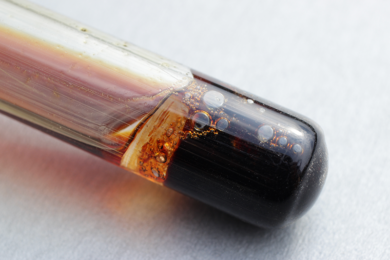 Canadian clean tech company Orbite Aluminae has developed a patented technology that can treat red mud, the most significant waste product of the traditional Bayer process for aluminium production. The company says it “offers the only ecologically sound and commercially viable alternative to manage and eliminate these toxic residues.” Orbite’s technology converts red mud into a dry, inert, and most importantly, environmentally neutral residue that is less than 90% the volume of its original state. High commercial value products are also recuperated in this process, including alumina (which can make up 25% of red mud), ultra-pure hematite (which is what gives the toxic residue its red colour) and magnesium oxide, as well as rare metal oxides that can have significant residual economic value. Orbite’s team of engineers has verified these results using red mud samples with properties characteristic common to those that currently confront the alumina industry. The company developed a large-scale industrial process capable of treating red mud while individually recovering its main components.
Canadian clean tech company Orbite Aluminae has developed a patented technology that can treat red mud, the most significant waste product of the traditional Bayer process for aluminium production. The company says it “offers the only ecologically sound and commercially viable alternative to manage and eliminate these toxic residues.” Orbite’s technology converts red mud into a dry, inert, and most importantly, environmentally neutral residue that is less than 90% the volume of its original state. High commercial value products are also recuperated in this process, including alumina (which can make up 25% of red mud), ultra-pure hematite (which is what gives the toxic residue its red colour) and magnesium oxide, as well as rare metal oxides that can have significant residual economic value. Orbite’s team of engineers has verified these results using red mud samples with properties characteristic common to those that currently confront the alumina industry. The company developed a large-scale industrial process capable of treating red mud while individually recovering its main components.
According to the International Committee for Study of Bauxite, Alumina & Aluminium (ICSOBA), alumina producers generated in 2011 alone more than 100 Mt of red mud of which only 5% was reused. The rest is stored in ponds and reservoirs, entailing significant environmental risks. For example, on October 4, 2010, a flood of toxic red mud devastated Hungary after a retaining dyke ruptured, causing an ecological disaster. India, China, Canada, and Brazil have also been affected by spills. The environmental and social costs associated with the Bayer process and global aluminum production have become so high that several countries now oppose the development of new mining and production facilities. Orbite’s technology is an ecological and economically viable solution to this problem.
Orbite now intends to license its technology to producers interested in reducing their environmental footprint and their risk of contamination, but also in reducing operating costs and growing their revenues.
Orbite’s technologies enable environmentally-neutral extraction of smelter-grade alumina (SGA), high-purity alumina (HPA) and high-value elements, including rare earths and metals, from a variety of sources such as aluminous clay and bauxite, without generating the toxic red mud residue that the traditional Bayer process produces. It owns ten different families of intellectual property rights (and patents pending) filed across the world for the extraction of alumina at the highest standards of sustainability. Orbite also owns exclusive mining rights over a total of 60,984 ha including the 6,665 ha Grande-Vallee property, the site of an aluminous clay deposit in Quebec, Canada. An NI 43-101 compliant report identified over 1,000 Mt of aluminous clay in part of this deposit. Orbite is currently converting its 2,600 m2 pilot plant in Cap-Chat, Quebec, Canada into a full-scale high-purity alumina production facility, and expects this plant to be fully operational in early 2013. The company also anticipates the launch of construction of its first SGA plant towards the end of 2013. Orbite plans to offer SGA and HPA products and to license its low processing cost technologies to well-qualified producers who want to reduce their environmental footprint. Orbite has recently entered into partnerships with the world’s largest aluminum producer, UC Rusal,









